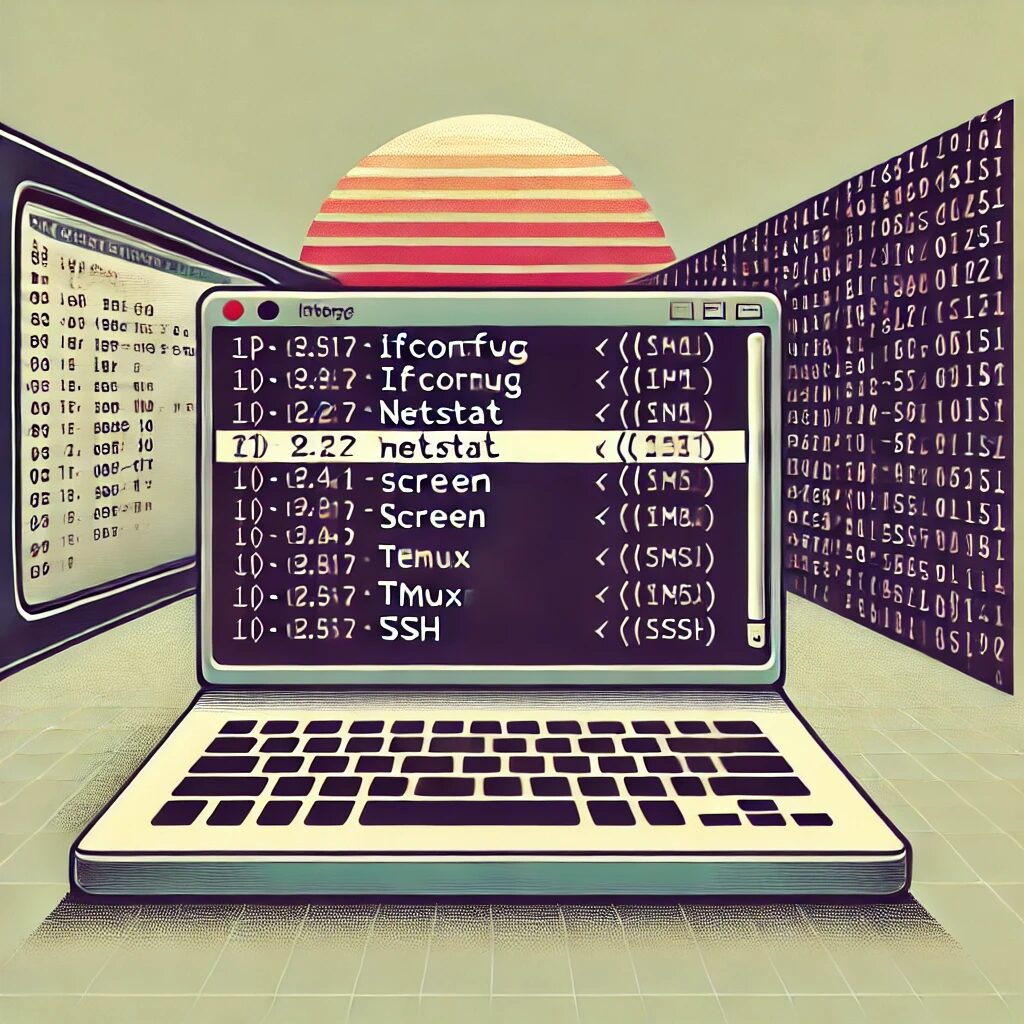Why It’s Time to Move On
Linux is known for its rich command-line heritage, offering a wide array of powerful tools to accomplish almost any task. However, like all technology, some of these tools have become outdated, with better alternatives now available. While many administrators and power users may still rely on these obsolete tools out of habit or necessity, there are compelling reasons to move on to their modern replacements. In this article, we’ll explore some of the most commonly used obsolete command-line tools in Linux, why they are considered outdated, and what you should be using instead.
1. screen
- Why It’s Obsolete:
screenwas once the go-to terminal multiplexer for managing multiple terminal sessions within a single window. However, its development has slowed, and it lacks many features that are now standard in modern alternatives.- Risks of Continuing to Use
screen: - Limited feature set compared to newer tools.
- Less active development and support, which could lead to potential security risks.
- Modern Alternative:
tmux - Why Switch:
tmuxoffers a more feature-rich experience with better session management, scripting support, and a more flexible configuration system. It’s actively developed and widely adopted in the Linux community.
2. ifconfig
- Why It’s Obsolete:
ifconfigwas traditionally used for network interface configuration, but it has significant limitations, especially with modern networking configurations and IPv6.- Risks of Continuing to Use
ifconfig: - Inability to manage newer network technologies effectively.
- Lack of support for modern protocols like IPv6.
- Modern Alternative:
ip - Why Switch: The
ipcommand from theiproute2package is far more versatile, supporting a wide range of networking tasks, including routing, tunnel management, and more. It’s the standard tool recommended by most Linux distributions.
3. netstat
- Why It’s Obsolete:
netstatwas commonly used to display network connections, routing tables, interface statistics, and more. However, it lacks the detailed filtering and performance of newer tools.- Risks of Continuing to Use
netstat: - Potential inaccuracies and inefficiencies when dealing with modern networks.
- Modern Alternative:
ss - Why Switch:
ssprovides more detailed and faster output, with better filtering options and support for newer networking features. It’s part of theiproute2suite and integrates well with other modern networking tools.
4. nslookup
- Why It’s Obsolete:
nslookuphas been deprecated in favor of more robust tools for querying DNS, such asdigandhost.- Risks of Continuing to Use
nslookup: - Limited functionality and less informative error messages.
- Modern Alternatives:
dig,host - Why Switch:
digandhostoffer more comprehensive DNS querying capabilities, better error reporting, and are widely supported by modern systems.
5. fdisk
- Why It’s Obsolete:
fdiskis an older tool for managing disk partitions but struggles with large disks and GPT partitioning schemes, which are standard in modern systems.- Risks of Continuing to Use
fdisk: - Potential data loss or mismanagement of partitions on newer disk technologies.
- Modern Alternatives:
gdisk,parted - Why Switch:
gdiskandpartedprovide better support for GPT partitions and larger disks.partedalso supports more advanced disk management tasks, making it a versatile choice for modern disk management.
6. route
- Why It’s Obsolete:
routewas used to manipulate the IP routing table, but likeifconfig, it has been superseded by more capable tools.- Risks of Continuing to Use
route: - Limited functionality and outdated methodology for routing management.
- Modern Alternative:
ip route - Why Switch:
ip routeprovides a more powerful and flexible way to manage routing tables, integrating seamlessly with otheriproute2tools.
7. arp
- Why It’s Obsolete:
arpwas used to manipulate the ARP cache. With modern networking tools, a more comprehensive approach is available.- Risks of Continuing to Use
arp: - Limited functionality and support for newer network architectures.
- Modern Alternative:
ip neigh - Why Switch:
ip neighprovides more detailed and versatile management of ARP and neighbor cache entries, making it a better fit for modern networking needs.
8. traceroute
- Why It’s Obsolete:
tracerouteis a classic tool for tracing the path packets take across a network. However, it lacks the interactivity and real-time feedback that newer tools offer.- Risks of Continuing to Use
traceroute: - Inefficiencies in troubleshooting and network diagnostics.
- Modern Alternative:
mtr - Why Switch:
mtrcombines the functionality oftracerouteandpingin a single interactive tool, offering real-time network diagnostics with continuous updates.
9. telnet
- Why It’s Obsolete:
telnetwas once used for remote shell access, but it is highly insecure as it transmits data, including passwords, in plaintext.- Risks of Continuing to Use
telnet: - Serious security vulnerabilities, including susceptibility to eavesdropping and man-in-the-middle attacks.
- Modern Alternative:
ssh - Why Switch:
sshprovides secure, encrypted communication for remote access, making it the standard for modern systems. It’s also highly configurable, supporting public key authentication and secure tunneling.
10. wget (for some use cases)
- Why It’s Obsolete:
- While
wgetis still useful for many tasks,curlhas become the preferred tool due to its broader protocol support and advanced options. - Risks of Continuing to Use
wget: - Missed opportunities for advanced HTTP interactions and protocol flexibility.
- Modern Alternative:
curl - Why Switch:
curlsupports a wider range of protocols, including HTTP, HTTPS, FTP, and more. It also offers better SSL/TLS handling and advanced features for scripting and automation.
Conclusion
While the tools mentioned in this article have served the Linux community well over the years, their time has passed. Continuing to rely on obsolete tools can introduce risks, inefficiencies, and limitations that are easily avoided by switching to modern alternatives. By adopting these newer tools, you’ll not only enhance your system’s security and functionality but also stay current with the best practices in the Linux ecosystem. Transitioning to these alternatives may require some adjustment, but the benefits in terms of performance, security, and capability make it well worth the effort.


